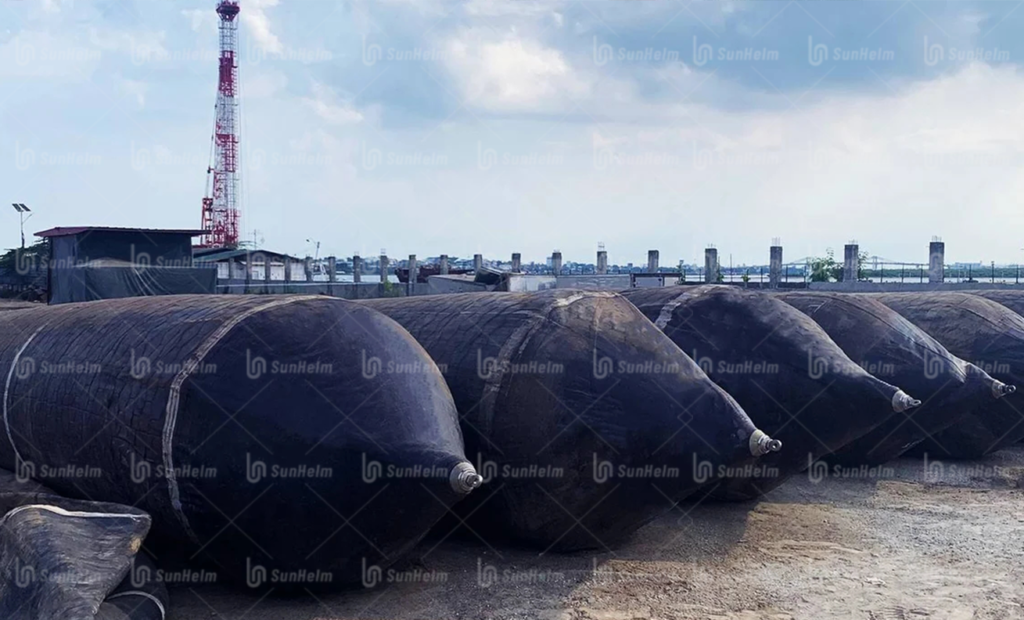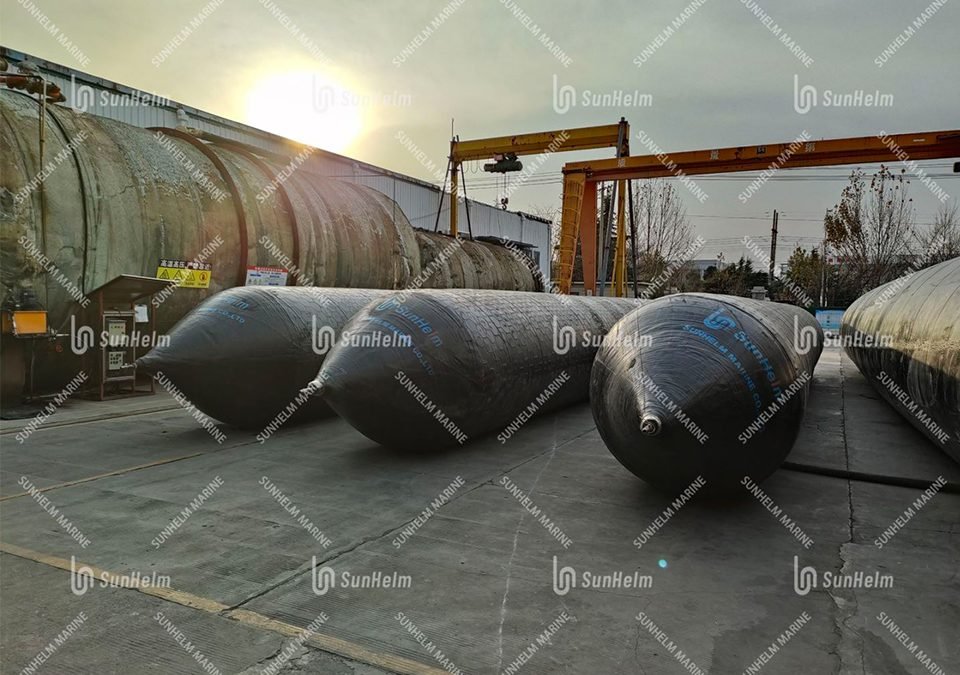Choosing the right marine airbags is vital for any operation. This applies whether you’re launching a ship, lifting heavy objects, or performing salvage work. It’s a precise process. Careful consideration of several factors ensures top performance and prevents costly problems.

1. Vessel and Structure Characteristics
Understanding the vessel or structure you’re moving is the first step.
- Weight and Size: You must accurately determine the total weight (displacement) and dimensions (length, width, draft). This data directly impacts the number, size, and strength (ply rating) of airbags you’ll need.
- Hull Shape and Contact Area: The hull’s shape dictates how the load spreads onto the airbags. For instance, vessels with pointed bottoms might need stronger airbags. Alternatively, you might need more of them to safely bear the concentrated load.
- Support Block Height: The height of the keel blocks used to support the vessel influences the required airbag diameter. This ensures sufficient clearance during operations.
2. Airbag Specifications and Performance
It’s crucial to understand an airbag’s technical specifications. This helps you match them to the specific task.
- Diameter: Diameter relates to the working height and ground clearance of the vessel. Larger diameters generally provide more surface area to spread the load. This is especially important for heavier ships. Also, the airbag’s diameter must be bigger than the height of any keel blocks for safe use.
- Effective Length: This is the cylindrical part of the airbag that directly touches the vessel. The airbag’s length should ideally be greater than the vessel’s width. It should extend 0.8 to 1.2 meters beyond each side. This provides optimal stability and distributes the load better.
- Layer Count and Strength (Ply Rating): Marine airbags use multiple layers of synthetic-tire cord for reinforcement. More layers mean higher strength and greater bearing capacity. For example, 6-8 layers are common for most jobs. However, heavy-duty operations may require 9-10 layers or more.
- Working Pressure and Bearing Capacity: This is the maximum internal pressure the airbag can safely handle. It directly relates to its load-bearing capacity. Ensure the airbag’s pressure rating and bearing capacity meet the job’s needs. Too much pressure risks rupture, while too little won’t lift effectively. Special attention is needed for the vessel’s total launch weight. This must be compared to the load-bearing capacity of individual marine airbags. Consider their overload capacity in emergencies, too. Therefore, prevent the internal pressure from exceeding the maximum permissible pressure. This applies both during initial inflation and as pressure changes after bearing the load.
- Deformation and Height: Consider the airbag’s height after bearing the load and deforming. This height must be enough for operations like block removal. It should also accommodate different slipway slopes. Furthermore, it needs to account for when the stern enters the water and any potential overload on the forward airbags when the stern becomes buoyant.
3. Operational Environment and Conditions
The surrounding environment significantly impacts airbag selection and deployment.
- Launch/Transfer Method: Are you using a single-row, staggered, or two-line arrangement? This affects the number and length of airbags needed.
- Ground Conditions/Ramp Surface: The type of slipway or ground surface (e.g., concrete, dirt) influences friction. This factor helps calculate the required airbag quantity. Ensure the surface is smooth and free of obstacles.
- Tidal Variations and Water Depth: For ship launching, consider water depth, tidal schedules, and the slipway’s angle. This ensures enough water clearance and controlled entry.
- Launch Slope: The ramp’s angle will affect the forces involved. Consequently, it influences the number and arrangement of airbags.
- Shore Environment: The specific conditions of the shore environment must be considered when designing and planning airbag deployment.
- Temperature: Extreme temperatures can affect how rubber products perform and how long they last.
4. Quality and Reliability
Investing in high-quality airbags from a reputable manufacturer is an investment in safety and efficiency.
- Material Quality: Look for airbags made from high-tensile, wear-resistant rubber. They should be reinforced with multiple layers of synthetic-tire cord.
- Manufacturing Standards and Certifications: Reputable suppliers hold ISO certifications. They also conduct rigorous pressure tests to ensure product quality and safety.
- Blasting Pressure: This shows the airbag’s ultimate strength and safety factor. A higher blasting pressure, relative to the working pressure, indicates better quality and safety.
- Reusability and Lifespan: High-quality airbags can be reused many times. For example, they can be used 70+ times with proper care. This offers significant cost savings.
- Supplier Reputation and Support: Choose a supplier with a proven track record. They should offer technical guidance, custom sizing, testing reports, and after-sales support. Avoid suppliers who prioritize low prices over safety and quality.
5. Calculations and Planning: The Heart of a Safe Launch
Precise calculations and detailed planning are fundamental to any successful airbag operation.
It is critical to correctly calculate and control the maximum load that marine airbags might bear at each stage of a ship launch. This ensures the load never exceeds the maximum rated permissible load. This is a key part of the airbag launching process.
- Number and Spacing of Airbags: You must perform precise calculations. These determine the exact number of airbags needed and their ideal spacing. This ensures the load is distributed evenly. It also prevents structural damage to the vessel or the airbags themselves. Formulas consider the ship’s weight, block coefficient, airbag bearing capacity, and contact length.
- Safety Factor: Always include a safety coefficient in your calculations. It is also wise to have a few extra airbags on hand (e.g., 2-4) for unexpected situations.
- Detailed Launch Plan: Never skip proper launch planning. This comprehensive plan should include all calculations, detailed risk assessments, and step-by-step operational procedures.
The main goal is to use as few airbags as possible while ensuring the vessel’s absolute safety during launch. This helps shipowners save money. By thoroughly considering all these factors, you can select the most appropriate marine airbags. This ensures a safe, efficient, and cost-effective operation. If you have any doubts, always consult experienced marine engineers or reputable airbag suppliers.


